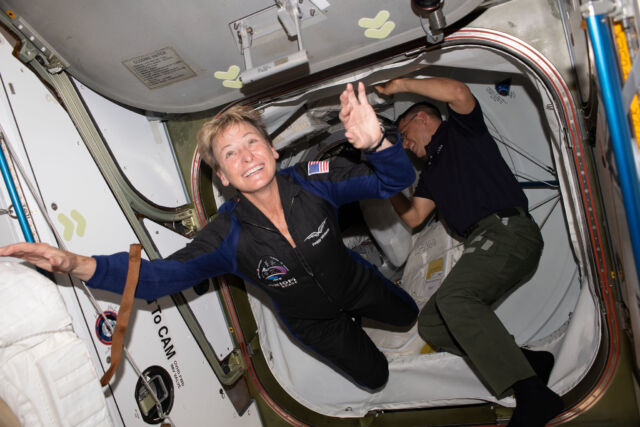"Let's say I wanted to buy one seat on a private astronaut mission for a government astronaut," said Ken Bowersox, NASA's associate administrator for space operations. "I can't do that right now because the missions would require informed consent, and I don't have a way to let a government astronaut do that. But if it was regulated by another government agency, then that might be a possibility."
If commercial spacecraft were regulated in the same way as commercial airplanes, "we could put government astronauts on vehicles like that the way we do on a commercial airliner nowadays," Bowersox said.

In 2020, NASA announced it was interested in flying its employees on suborbital vehicles. Astronauts could fly with Blue Origin or Virgin Galactic for training purposes to prepare for longer-duration stints in orbit, or NASA researchers could tend to their microgravity experiments on a suborbital hop.
Three years later, NASA's suborbital crew program hasn't made much progress. Bowersox told a NASA Advisory Council committee in May that the agency hasn't identified any specific opportunities for an astronaut or government researcher to fly on a suborbital mission, but the program is still alive.
There are several issues at play here. How does NASA account for the safety of commercial rockets and spacecraft without going through an onerous certification effort that expends NASA resources and encumbers private industry? The suborbital rockets flown by Blue Origin and Virgin Galactic are already flying commercial passengers, while NASA worked with SpaceX on certifying the Dragon capsule from the start.
"The agency has a requirement to ensure the safety of our employees when we put them into hazardous situations, including spaceflight," said Phil McAlister, head of NASA's commercial spaceflight division.
Instead of full certification, NASA is taking a different "safety case" approach, where space transportation providers present their safety processes to NASA, which then verifies that those procedures are sound. With Blue Origin and Virgin Galactic, NASA has started "deep dive" assessments of specific technical risks, such as propulsion, parachutes, mechanisms, and operations.
McAlister said the safety analyses should be complete in early 2024. Only then will NASA decide how to proceed with the suborbital crew program. The lessons learned could inform NASA officials on how to evaluate the safety of fully commercial orbital flights.
“The bottom line is without this integrated regulatory regime, we've got some barriers to things that all of us would like to see happen," Bowersox said. "When we have regulation, it can enable things, but the folks on the other side are worried that the regulation could happen too soon and stifle the industry growth. So there's a balance between the two, but there's work going on in this area to try and find a way forward.”
reader comments
150 with